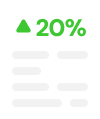Creating a well-structured website outline is a crucial first step in the web design process. It helps you organize your content, plan the user journey, and ensure that your website meets its objectives. Here’s a step-by-step guide to creating the perfect website outline:
1. Define Your Website’s Purpose and Goals
Start by clearly defining the purpose of your website. Is it to provide information, sell products, generate leads, or showcase your portfolio? Set specific goals for what you want to achieve with your website. This will guide the structure and content of your outline.
2. Identify Your Target Audience
Understanding your target audience is key to designing a website that meets their needs. Consider their preferences, behaviors, and the problems they need solutions for. Tailoring your website’s content and structure to your audience will improve user experience and engagement.
3. Conduct Competitor Research
Analyze websites of competitors or similar businesses to gather ideas and identify best practices. Look at their structure, content, and features to see what works well and what could be improved. This can provide valuable insights for your own website outline.
4. Plan Your Website’s Structure
Create a hierarchical structure that outlines the main sections and pages of your website. A typical structure might include:
- Homepage: The main landing page that introduces your business and highlights key information.
- About Us: A page that provides information about your company, mission, and team.
- Products/Services: Pages detailing your offerings, including features, pricing, and benefits.
- Blog/News: A section for posting articles, updates, or news.
- Contact Us: A page with contact information and a form for inquiries.
- FAQ: A page addressing common questions and concerns.
- Portfolio/Gallery: A showcase of your work or products.
5. Create a Content Inventory
List all the content you want to include on your website. This may involve text, images, videos, and other multimedia elements. Categorize the content based on the pages or sections where it will appear. This will help ensure that you have all the necessary materials before development begins.
6. Develop User Flow and Navigation
Plan how users will navigate through your website. Create a user flow diagram that shows the path users will take to complete specific actions or find information. Ensure that navigation is intuitive and that users can easily access the content they are looking for.
7. Outline Each Page’s Content
For each page of your website, outline the content and elements that will be included. This might include:
- Headings and Subheadings: Organize content into logical sections.
- Text Content: Draft the main text, keeping it clear and concise.
- Images and Media: Specify where images, videos, or other media will be placed.
- Calls to Action (CTAs): Identify key actions you want users to take (e.g., sign up, buy now, contact us).
- Forms and Interactive Elements: Include any forms or interactive features required.
8. Consider SEO and Accessibility
Ensure that your website outline includes elements that support search engine optimization (SEO) and accessibility. This might involve planning for meta tags, alt text for images, and easy-to-read content. Accessibility features ensure that all users, including those with disabilities, can navigate and use your site effectively.
9. Review and Refine Your Outline
Review your website outline to ensure it meets your goals and effectively serves your audience. Seek feedback from stakeholders or colleagues to identify any gaps or areas for improvement. Make adjustments as needed to refine the structure and content.
10. Create a Sitemap
Finally, convert your website outline into a sitemap. A sitemap is a visual representation of your website’s structure, often in the form of a flowchart. It provides a clear overview of the website’s organization and helps guide the development process.
Conclusion
A well-crafted website outline is essential for a successful web design project. By defining your goals, understanding your audience, planning your structure, and outlining content, you can create a roadmap that guides the development of your website. This organized approach ensures that your site is user-friendly, effective, and aligned with your objectives.








